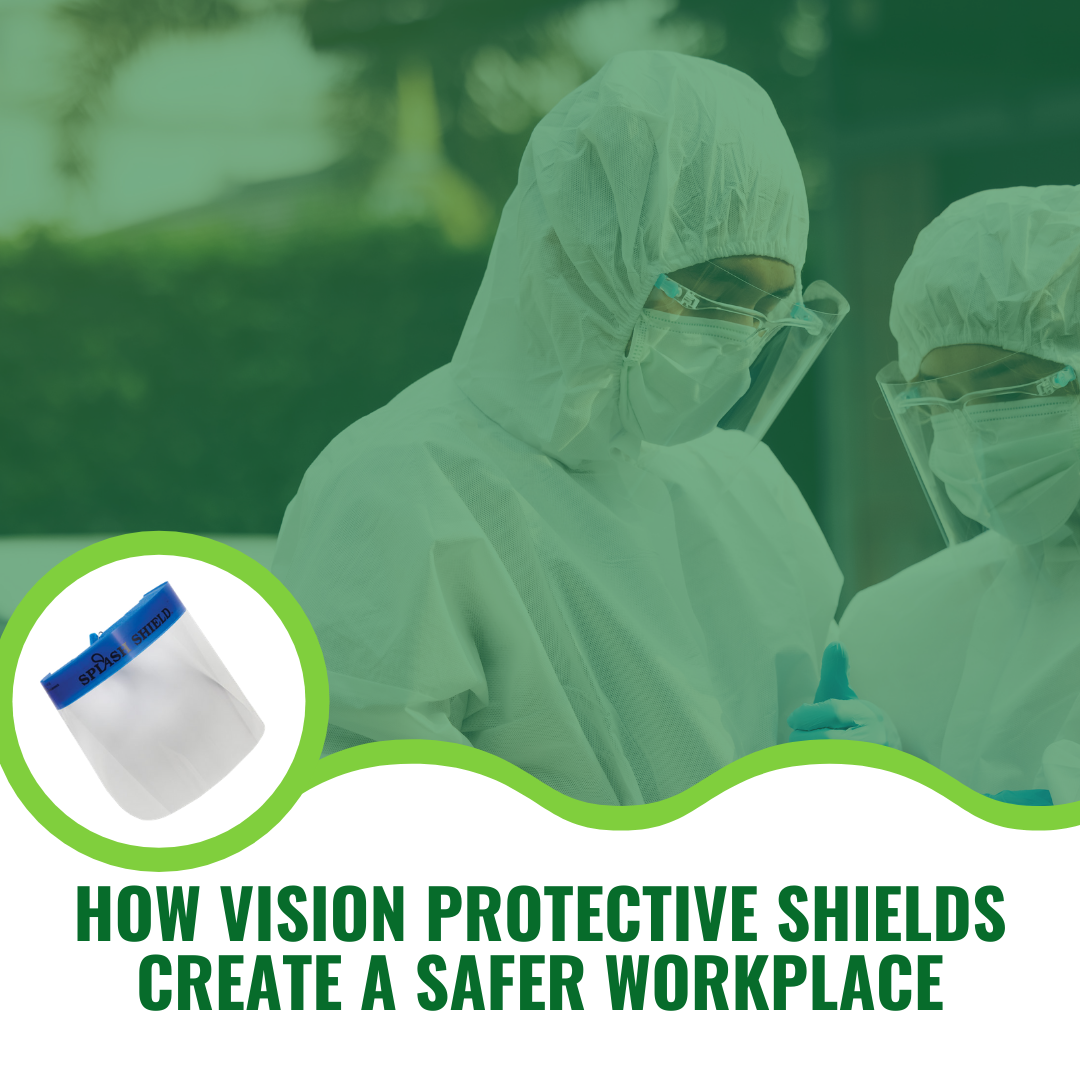We use cookies to make your experience better. To comply with the new e-Privacy directive, we need to ask for your consent to set the cookies. Learn more.
How Vision Protective Shields Create a Safer Workplace
Face shields (or vision protective shields) are simple barriers used to prevent injuries from splashing fluids, flying objects, and some infectious materials. They’re a useful component of a well-structured safety plan, and they can assist with OSHA compliance in certain circumstances. To use them effectively, however, it’s helpful to know what they can and can’t do.

First, it’s important to realize that face shields serve a limited (but important) function. Vision protective shields are generally intended as a secondary form of protection for a worker’s entire face — not just the eyes — but they should not be used as a replacement for safety eye glasses or goggles. Unless they’re specifically designed to protect against major impact hazards, they’re not functional for that purpose. However, when combined with other safety gear, they add a crucial layer of protection.
In some applications, face shields are required by law. In others, they’re a helpful addition; to use them properly, employers should consider the task at hand. Fortunately, OSHA guidelines provide some assistance here.
Does OSHA Require Face Shields for Battery Rooms?
In certain situations, employees must wear face shields, period. OSHA 1926.441(a)(5) specifically notes that “face shields, aprons, and rubber gloves shall be provided for workers handling acids or batteries,” emphasis added.
The guidance is clear: Facilities that operate lift trucks with lead-acid batteries must provide face shields for their battery room employees. All personnel should wear appropriate equipment when adding water to cells, washing batteries, or performing other common battery maintenance tasks. The shield may provide protection from battery acid — though the worker’s safety goggles provide the most important protection — and a well-fitted protective shield won’t slow down the worker.
Face shields may also help employers comply with other OSHA regulations. For instance, OSHA 1926.102(a)(2) requires employers to provide protection from “flying particles, molten metal, liquid chemicals, acids or caustic liquids, chemical gases or vapors, or potentially injurious light radiation.” A high-quality face shield may provide this protection for some of these workers, provided that the shield is specifically designed to address the hazard in question.
When outfitting a new facility, perform a detailed hazard assessment before buying equipment. By understanding your operation’s potential hazards, you can choose appropriate PPE (including face shields) to keep workers as safe as possible.
Vision Protective Shields as COVID-19 Protocol
Currently, the CDC does not recommend using face shields as a primary part of a COVID-19 response. In other words, face shields should not be used as a substitute for masks. Face shields may not meet the requirements of some state, city, and federal mask mandates, and as the CDC notes, “at this time, we do not know how much protection a face shield provides to those around [the wearer.]”
Even so, many organizations require employees to wear face shields as part of their pandemic response. Some reasons to consider of adding face shields to your COVID-19 protocol include:
- Face shields give customers and employees a clear indication that the business takes safety seriously.
- Some employees (including those with hearing disabilities) may be able to communicate more easily with a face shield.
- When performing certain tasks, wearing a standard mask could be impractical or unsafe.
- Face shields may prevent wearers from touching their eyes or mouth, which could have a beneficial effect in limiting viral transmission.
- Face shields have other practical benefits (detailed above) that make them useful outside of a pandemic.
If you decide to use face shields, recognize that they’re less effective than masks for controlling the spread of airborne viruses. Make sure employees wash their hands before and after using their equipment; they should avoid touching their face and eyes when removing the shield.
Buy High-Quality Face Shields for Industrial Use
Since face shields are a secondary form of protection, employers should look for affordable products made with high-quality materials. Disposable face shields are perfectly fine — in fact, chemical or biological contaminants may compromise the functionality of a face shield, so in many applications, disposable products are preferable.
Solus Group offers disposable face shields from WYK Sorbents, which can help your facility meet its OSHA-mandated responsibilities. Intended for use in the battery room, these shields are easy to wear while managing physically intensive tasks. The shield is also available as part of the PPE Deluxe Kit, which contains nitrile gloves, safety glasses, a chemical coverall, a disposable apron, and latex overboots. This kit makes compliance easy — and more importantly, it keeps workers safe.
As is the case with any safety equipment, employers should establish clear guidance for workers. Make sure that personnel understand the importance of safety gear, and provide regular training to ensure that they wear the gear properly at all appropriate times. With the right approach, you can create a simple, effective, and compliant safety policy for any operation.
